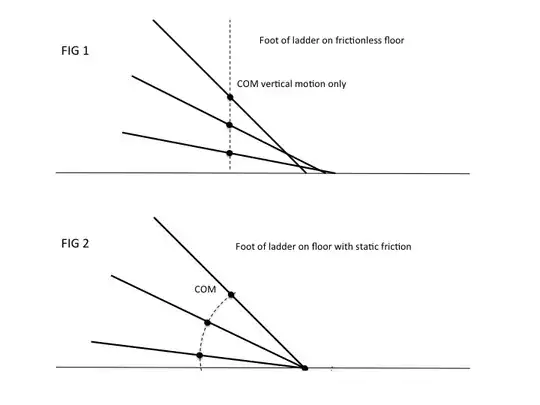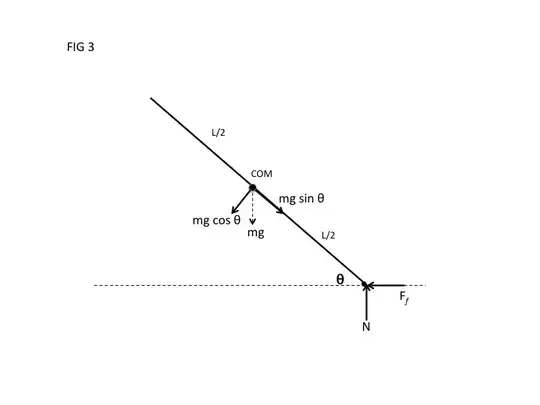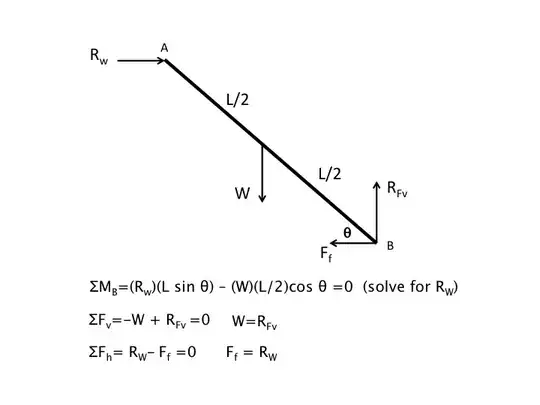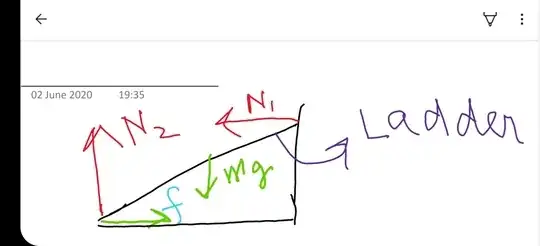I am trying to determine whether the ground exerts a horizontal
frictional force On the ladder (in addition to the normal contact
force) when the surface is not frictionless and came up with the above
thought experiment. If there exists such a force, then in its absence,
the ladder should also slide in addition to falling.
You are correct that, in the absence of friction on the ground, the ladder will slide on the ground in addition to falling. Since there would be no external horizontal forces acting upon the ladder, the center of mass (COM) can only have vertical motion. For the motion to be strictly vertical, the foot of the ladder has to slide. See Fig 1 below.
But we also know that if friction is present it will oppose the relative motion between the foot of the ladder and the ground. Friction will either prevent relative motion between the surfaces (static friction), or act in opposition to the sliding motion (kinetic friction). If the maximum possible static friction force is not exceeded, horizontal motion (sliding) will be prevented and the motion of the COM will follow a circular path, as shown in Fig 2 below.
I understand that friction on the ladder is the horizontal component
of the reaction force to that exerted by the ladder in the ground, but
there is only a vertical gravitational force on the ladder pushing it
vertically into the ground, so shouldn’t the reaction force be
vertically upward only?
Although the gravitational force acts vertically on the COM, the gravitational force can be resolved into components acting parallel and perpendicular to the ladder at the COM. See Fig 3 below. The component that acts parallel to and down the ladder can be resolved into normal and horizontal (friction) reaction forces.
By the way I came across the following answer by @ja72 to a similar question: Motion of the center of mass of a falling rod. Note the graphic provided by ja72.
Hope this helps.





